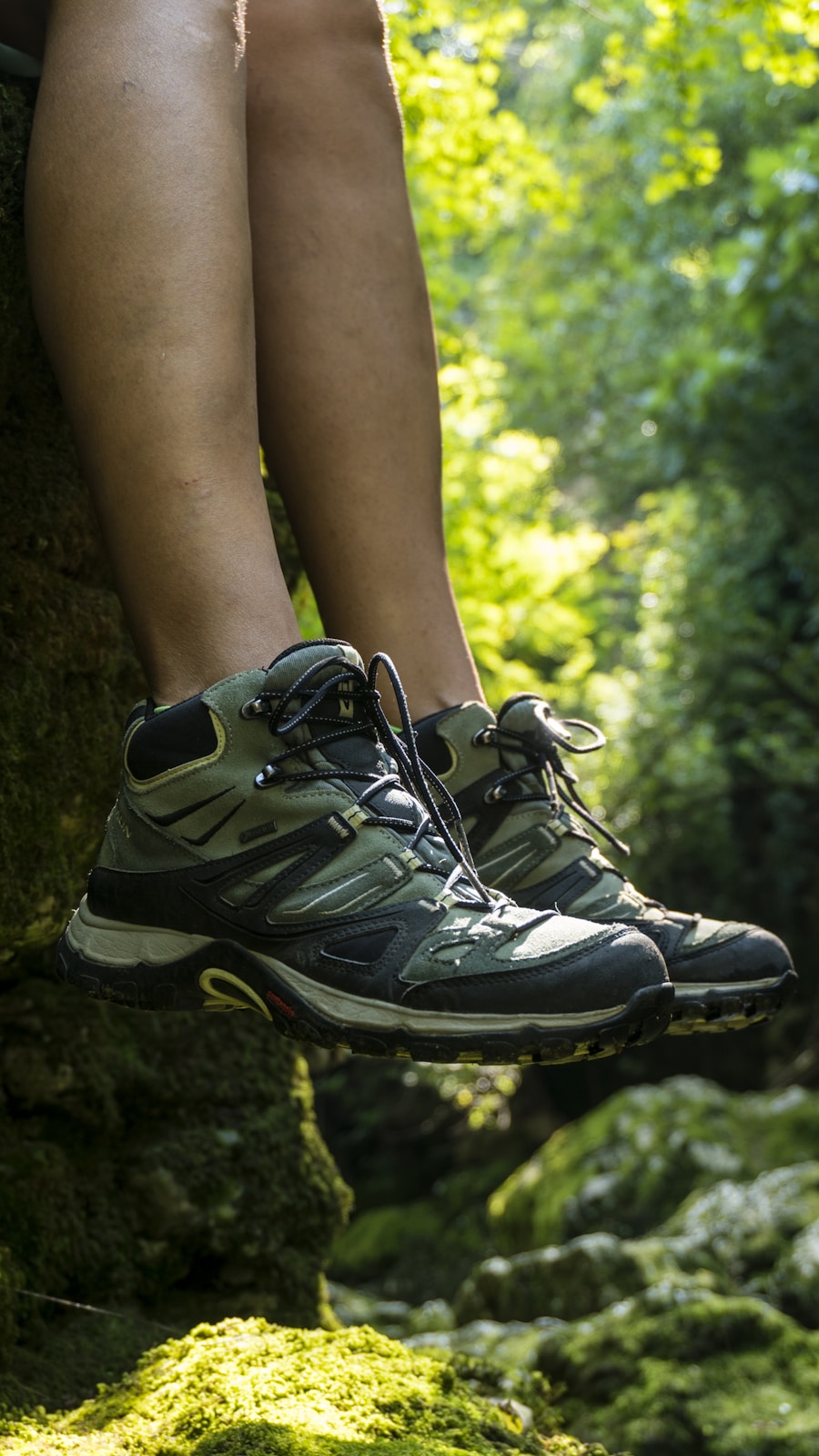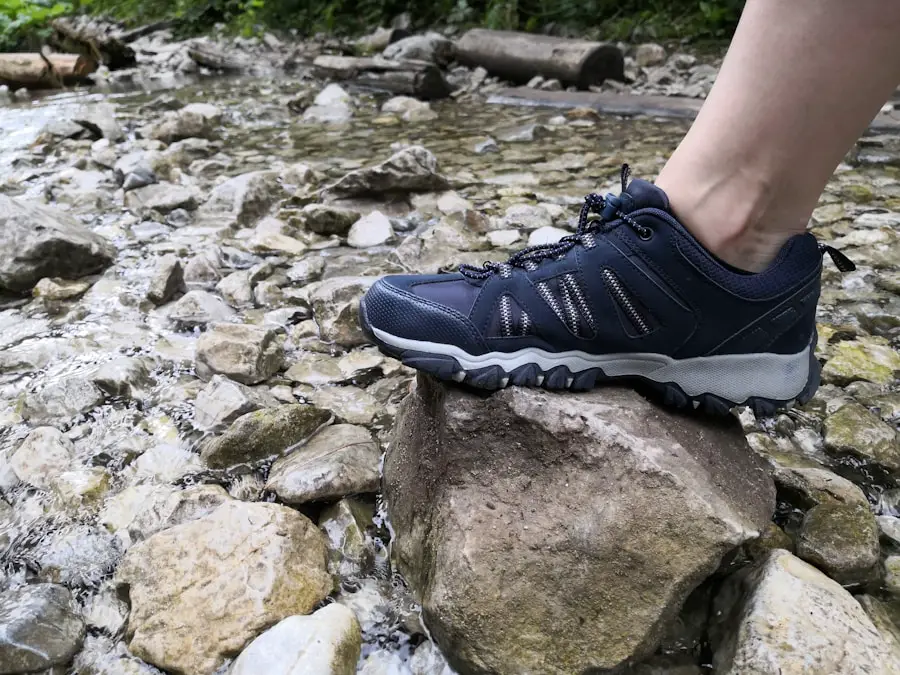When it comes to footwear designed for outdoor activities, hiking shoes and walking shoes serve distinct purposes, each tailored to specific environments and user needs. Hiking shoes are engineered for rugged terrains, providing enhanced support, traction, and durability. They often feature reinforced toe caps, stiffer midsoles, and specialized outsoles designed to grip uneven surfaces.
The materials used in hiking shoes are typically more robust, often incorporating waterproof membranes to protect against moisture and debris. This construction allows hikers to navigate rocky trails, muddy paths, and steep inclines with confidence. In contrast, walking shoes are primarily designed for flat, paved surfaces and urban environments.
They prioritize comfort and cushioning over the rugged features found in hiking shoes. Walking shoes generally have a more flexible sole, allowing for a natural foot movement that is essential for walking on even ground. The materials used in walking shoes tend to be lighter and more breathable, focusing on providing a comfortable experience during extended periods of walking.
While both types of footwear aim to support the foot and promote healthy movement, the specific design elements reflect their intended use, making it crucial for individuals to choose the right type based on their activities.
Key Takeaways
- Hiking shoes are designed for rough terrain and provide more ankle support, while walking shoes are more flexible and lightweight for everyday use.
- Hiking shoes offer better traction and stability on uneven surfaces, making them ideal for outdoor walks and hikes.
- Hiking shoes can be heavier and less breathable than walking shoes, leading to potential discomfort during long walks on flat surfaces.
- When choosing hiking shoes for walking, consider factors such as fit, support, and waterproofing to ensure comfort and protection.
- To break in hiking shoes for walking, start with short walks, gradually increasing the distance to allow the shoes to mold to your feet.
The Benefits of Hiking Shoes for Walking
Superior Traction
The outsoles of hiking shoes are made from high-friction rubber compounds that provide enhanced grip on slippery or loose surfaces, making them ideal for walking on trails or in areas where the ground may be unstable.
This added traction significantly reduces the risk of slips and falls, providing walkers with a greater sense of security.Structural Support
The stiffer midsoles found in hiking footwear help to stabilize the foot, which can be particularly beneficial for individuals with flat feet or those who overpronate. This support can alleviate discomfort during longer walks, especially on uneven surfaces where the foot may be subjected to various stresses.
Enhanced Comfort
Many hiking shoes come with features such as padded collars and tongues that enhance comfort around the ankle, further contributing to a pleasant walking experience.
The Drawbacks of Hiking Shoes for Walking

Despite their advantages, there are also drawbacks to using hiking shoes for walking. One significant concern is weight; hiking shoes tend to be heavier than standard walking shoes due to their robust construction and additional features. This extra weight can lead to fatigue during long walks on flat surfaces, where lighter footwear would typically suffice.
For individuals who primarily walk on paved paths or sidewalks, the added bulk of hiking shoes may feel cumbersome and unnecessary. Another drawback is the stiffness of hiking shoes. While this rigidity provides excellent support on uneven terrain, it can be less comfortable for casual walking on smooth surfaces.
The lack of flexibility may restrict natural foot movement, leading to discomfort over time. Additionally, the breathability of hiking shoes can vary significantly; some models may not offer the same level of ventilation as dedicated walking shoes, potentially leading to overheating or moisture buildup during warmer weather.
Considerations for Choosing Hiking Shoes for Walking
| Consideration | Importance |
|---|---|
| Fit | Very important – ill-fitting shoes can cause blisters and discomfort |
| Support | Important – proper support can prevent ankle injuries |
| Traction | Very important – good traction is essential for hiking on different terrains |
| Waterproofing | Important – keeps feet dry and comfortable in wet conditions |
| Weight | Important – lighter shoes reduce fatigue during long hikes |
| Durability | Very important – durable shoes last longer and provide better value |
When selecting hiking shoes for walking purposes, several factors should be taken into account to ensure optimal comfort and performance. First and foremost is fit; a proper fit is crucial for any type of footwear but becomes even more critical when considering the unique demands of hiking shoes. It is advisable to try on multiple pairs and walk around in them to assess comfort levels.
Pay attention to areas such as the toe box and heel; there should be enough room to wiggle your toes without feeling cramped. Another important consideration is the type of terrain you will be walking on most frequently. If your walks will primarily take place on well-maintained trails or urban environments, you may not need the most rugged features available in high-end hiking shoes.
Conversely, if you plan to venture into more challenging areas, investing in a pair with enhanced traction and support will be beneficial. Additionally, consider the weather conditions you typically encounter; waterproof options may be necessary if you often walk in wet or muddy conditions.
Tips for Breaking in Hiking Shoes for Walking
Breaking in new hiking shoes is an essential step that can significantly enhance comfort during walks. A gradual approach is recommended; start by wearing your new shoes for short periods around the house or during light walks. This allows your feet to adjust to the shoe’s structure without overwhelming them with long distances right away.
Gradually increase the duration and intensity of your walks as your feet become accustomed to the new footwear. Another effective strategy is to wear appropriate socks while breaking in your hiking shoes. Opt for moisture-wicking socks that provide cushioning without adding excessive bulk.
This combination can help prevent blisters and discomfort as you acclimate to the new fit. Additionally, consider using a shoe stretcher or wearing thick socks while breaking them in if you find any tight spots; this can help alleviate pressure points and create a more comfortable fit over time.
Alternatives to Hiking Shoes for Walking

While hiking shoes can be an excellent choice for many walkers, there are alternatives that may better suit specific needs or preferences. Trail running shoes are one such option; they offer a lightweight design with good traction and flexibility, making them suitable for both running and walking on varied terrains. These shoes often feature breathable materials and a lower profile than traditional hiking footwear, appealing to those who prioritize speed and agility.
Another alternative is multi-sport shoes, which are designed for versatility across different activities such as hiking, biking, and casual walking. These shoes typically combine elements from both hiking and running footwear, offering a balance of support and comfort without being overly specialized. For individuals who primarily walk on paved surfaces but occasionally venture onto trails, these multi-sport options can provide a practical solution without sacrificing performance.
How to Properly Care for Hiking Shoes Used for Walking
Proper care of hiking shoes is essential to prolong their lifespan and maintain performance, especially when they are used frequently for walking. After each use, it is advisable to clean off any dirt or mud that may have accumulated on the shoes. A soft brush or cloth can effectively remove debris from the upper materials and outsoles without causing damage.
For deeper cleaning, especially if the shoes have been exposed to wet conditions, rinsing them with water and allowing them to air dry is recommended. Additionally, storing hiking shoes correctly can significantly impact their longevity. It is best to keep them in a cool, dry place away from direct sunlight or heat sources that could warp or degrade materials over time.
Using shoe trees or stuffing them with newspaper can help maintain their shape while preventing moisture buildup inside the shoe. Regularly checking the condition of laces and insoles is also important; replacing worn components can enhance comfort and performance during walks.
Are Hiking Shoes Suitable for Walking?
The suitability of hiking shoes for walking largely depends on individual preferences and specific walking conditions. For those who frequently navigate uneven terrains or require additional support due to foot issues, hiking shoes can provide significant benefits that enhance comfort and safety during walks. However, individuals who primarily walk on flat surfaces may find that lighter walking shoes offer a more comfortable experience without the added weight and stiffness associated with hiking footwear.
Ultimately, understanding the differences between these types of footwear allows walkers to make informed decisions based on their unique needs and environments. Whether opting for hiking shoes or exploring alternatives like trail running or multi-sport shoes, prioritizing fit, comfort, and intended use will lead to a more enjoyable walking experience overall.
If you are considering whether hiking shoes are good for walking, you may also be interested in reading about the best waterproof sneakers for travel. These sneakers offer both comfort and protection for long walks or hikes in various weather conditions. Check out the article here for more information on the top options available.
Love travel? Join Our Facebook Community
FAQs
What are hiking shoes?
Hiking shoes are footwear designed for outdoor activities such as hiking, trekking, and walking on rough terrain. They are typically designed to provide stability, support, and protection for the feet during outdoor activities.
Are hiking shoes good for walking?
Yes, hiking shoes are good for walking, especially on uneven or rugged terrain. They are designed to provide support and stability, which can be beneficial for long walks or hikes. However, for casual walking on flat surfaces, other types of walking shoes may be more suitable.
What are the benefits of using hiking shoes for walking?
Hiking shoes offer several benefits for walking, including ankle support, traction on uneven surfaces, and protection from rocks and debris. They are also designed to be durable and provide comfort for long periods of walking.
Can hiking shoes be used for everyday walking?
While hiking shoes can be used for everyday walking, they may not be the most comfortable option for walking on flat, even surfaces. For everyday walking on pavement or indoors, other types of walking or athletic shoes may be more suitable.
How do I choose the right hiking shoes for walking?
When choosing hiking shoes for walking, consider factors such as the type of terrain you will be walking on, the level of support and cushioning you need, and the fit and comfort of the shoes. It’s important to try on different styles and brands to find the best fit for your feet.
